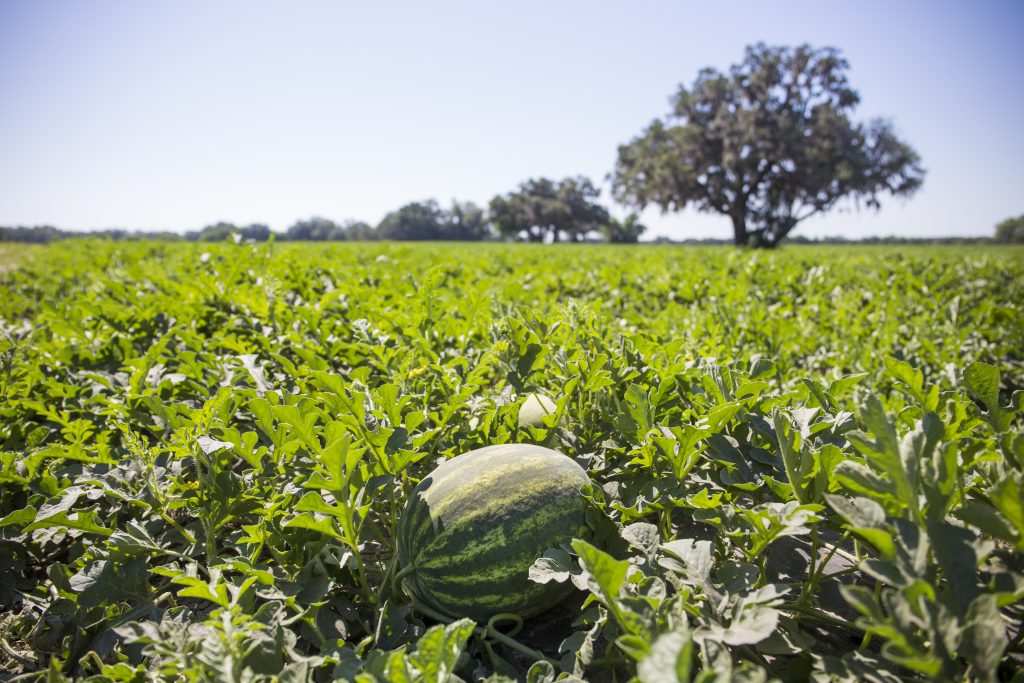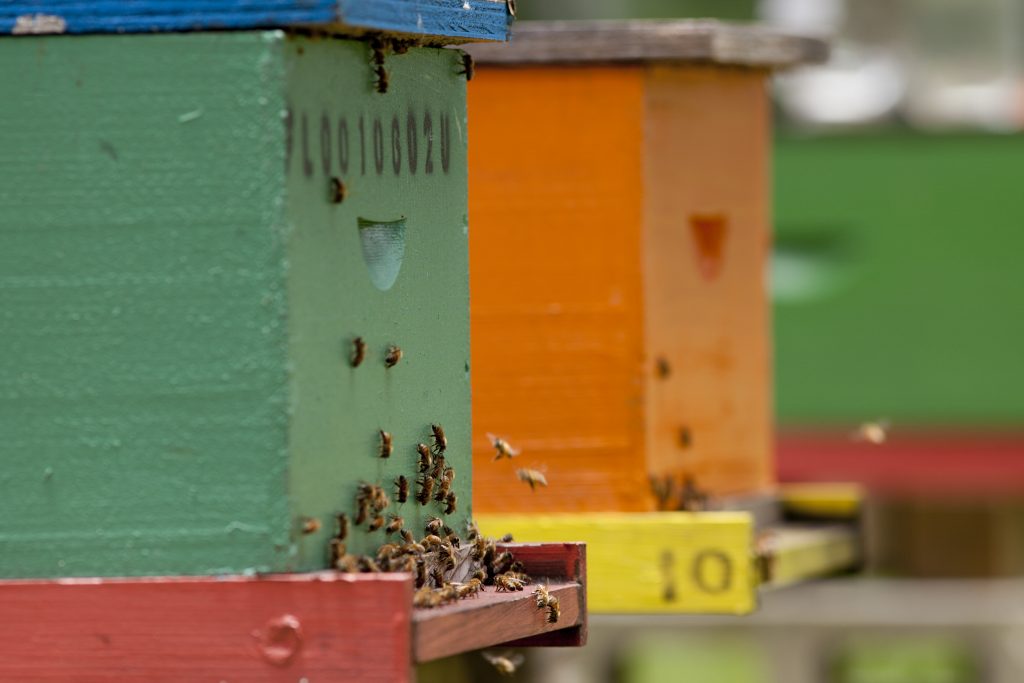
By Sylvia Willis, Amy Vu and Jamie Ellis
Pollinators play an important role in the production of crops around the nation. Different crops rely on different techniques for pollination. Corn, for example, uses wind to carry pollen to female flowers, whereas watermelon depends on pollinators to deliver pollen. Pollinators include insects, birds and bats.
Many fruits and vegetables result directly from pollinators such as honey bees. In apple, cranberry, melon, broccoli and almond production, honey bees are the most common pollinator. Honey bees are responsible for a significant portion of the world’s food production and contribute nearly $20 billion to the crop industry by providing pollination services all over the United States.
In Florida, the hot, humid climate is ideal for crop production throughout the year, but this favorable environment also paves the way for various pests that negatively impact crops year-round. Growers use integrated pest management (IPM) to consider the risks and benefits associated with cultural, chemical, biological or physical control methods to combat pests. Typically, as a last resort, a chemical control is utilized to save a crop. When selecting a pesticide, growers should consider a chemical’s efficiency of pest control and potential impacts on pollinators when applied.
PESTICIDE EFFECTS

There are many factors that contribute to honey bee and pollinator stress, one being the use of insecticides. Effects of certain pesticides on bees can vary from no harm to acute harm (bee or single colony death) to chronic harm (altered bee behavior or physiology, reduced reproduction, colony decline or death). Suspected pesticide exposure is one of many biological and environmental factors associated with bee colony loss. Bees are likely exposed to pesticides outside the hive when foraging during the day. Plant foliage, pollen, nectar and soil can all contain potential toxins after direct application or drift from certain pesticides.
Reading and properly interpreting pesticide labels and exposure warnings to honey bees and pollinators is vital. According to the Environmental Protection Agency, if a product is intended for foliar application to crops and contains a pesticide toxic to pollinators, the label must include appropriate cautions. Examples of bee and pollinator hazard warning statements are:
- “This product is toxic to bees exposed to treatment and for more than five days following treatment.”
- “Applications to all crops may be made at any time. Fenpyroximate is practically nontoxic to bees and wasps when used according to this label.”
PROTECTION PRACTICES
Protecting pollinators from pesticide exposure is on the forefront of many growers’ minds when considering pest control methods. For crops that require bees for pollination, it is in the best interest of the grower to protect bees. Without proper pollination, the grower’s crop production and yield are negatively impacted. There are a variety of best management practices that growers utilize every day to minimize impacts on honey bees and pollinators. These include:
- Following the label – THE LABEL IS THE LAW
- Obtaining a pesticide license to legally spray pesticides
- Applying pesticides only when necessary
- Employing IPM practices and using chemical control as a last resort
- Spraying pesticides at night (label permitting) to maximize safety of honey bees and other pollinators
- Utilizing target pesticide application such as injecting, rather than broad application
- Selecting pesticides that require fewer applications, minimizing risk potential
- Applying less toxic formulations and compounds
- Developing a pest management plan that considers bee foraging during bloom
- Understanding a crop’s pollination requirements to minimize exposure
- Planting beneficial plants along field edges to provide additional resources for honey bees and other pollinators
- Maintaining a good relationship with beekeepers and notifying them in advance of an application
- Consulting with fellow producers, beekeepers and Extension professionals for recommendations
EXTENSION’S ROLE
Through services and educational efforts offered by Extension services, growers are provided appropriate tools to combat pest issues while also protecting pollinators, the environment and human health. Extension provides educational classes to enhance grower knowledge of pollinator protection on topics such as IPM (i.e. monitoring techniques, pest and plant knowledge, and pesticide selection) and best management practices regarding pest control.
If pesticide application is necessary, Extension provides the training, testing and necessary certifications required to apply pesticides legally. In addition, Extension highlights up-to-date pollinator protection label changes during trainings and classes. Additional efforts of Extension agents and specialists include providing updates throughout the growing season to inform producers on potential pest issues, pesticide recommendations, and notifying producers of possible impacts on pollinators of certain products.
Understanding the importance of pollinators on the food system has brought increased awareness for pollinator protection programs and trainings. Growers can make a difference by making informed decisions to select and utilize chemicals with pollinator protection in mind. By building positive relationships between beekeepers and growers, an open dialog of communication can be established. As a result, growers can rely on Extension services when questions on chemical safety regarding honey bees and other pollinators arise.
See Minimizing Honey Bee Exposure to Pesticides at edis.ifas.ufl.edu/pdffiles/IN/IN102700.pdf for more information on sustainable production practices and guidance on risk-reducing strategies to protect honey bee and pollinator populations.
Sylvia Willis is the University of Florida (UF) Institute of Food and Agricultural Sciences Extension agriculture agent in Suwannee County. Amy Vu is an Extension coordinator and Jamie Ellis is the Gahan endowed professor, both at the UF Honey Bee Research and Extension Laboratory in Gainesville.









